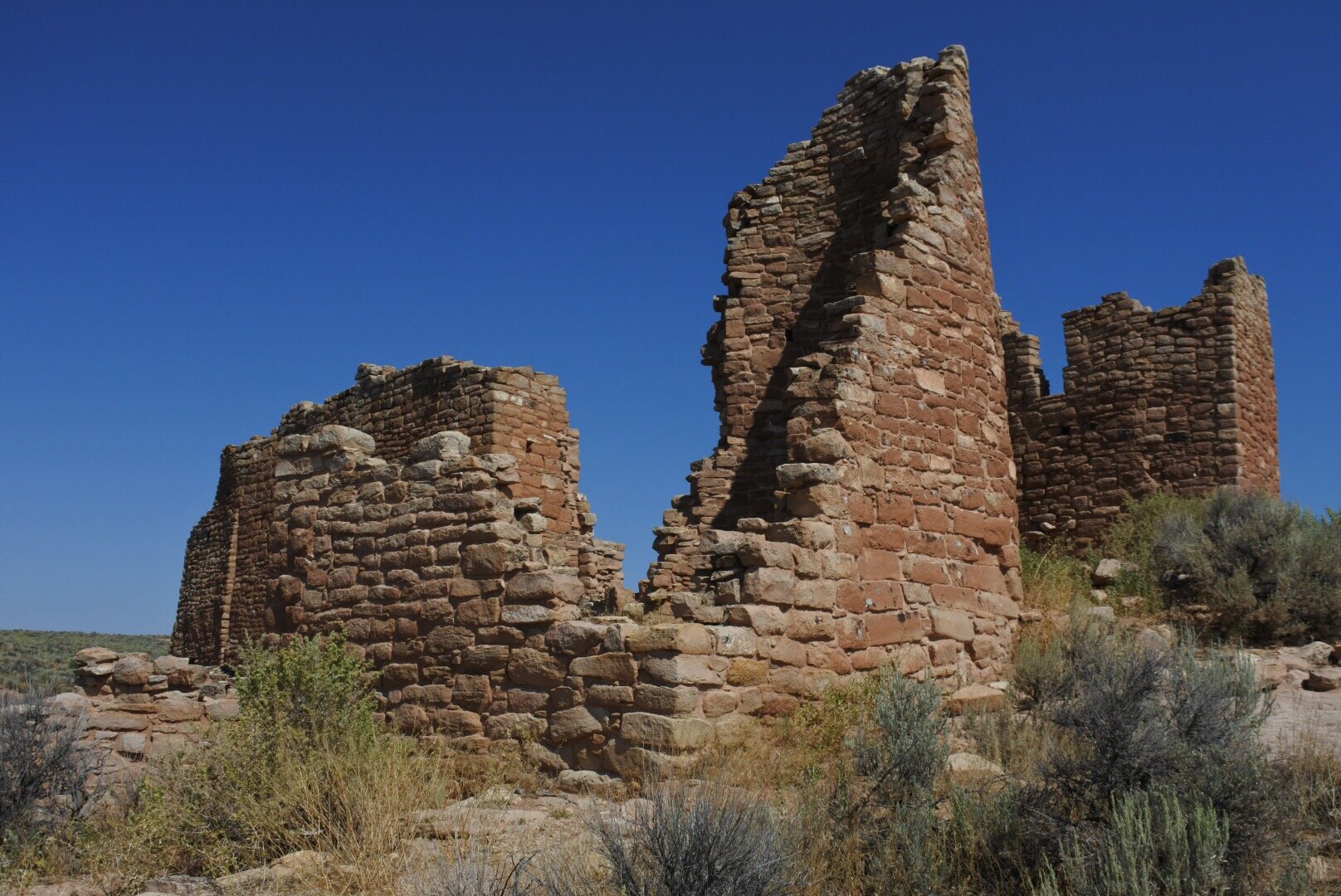I recently took a short trip to a series of amazing Native American settlement sites in south Colorado and Utah. Mesa Verde National Park is the more established, better known, site, located just outside of Cortez, Colorado. This is the location of the iconic cliff dwellings, dramatic masonry construction tucked under massive sandstone overhanging cliffs.
The other site, Hoevenweep, is less known but no less remarkable and well worth a visit. It consists of a series of masonry structures located within, and on the rim of a small canyon, on the vast sagebrush plain near Blanding, Utah.
The overall impression of both of these sites varies significantly from what I had been taught and assumed. These are not massive, defensive structures, but rather, the structures in both these sites comprise a lively, open communities. With our prejudice of Western architecture and its stone castles, wall, fortifications and bastions, it is easy to assume that any massive stone constructions, especially located on “defensive” cliff sides, must have been the result of an embattled, war-like society. Certainly all the photos I had seen over the years reinforced that assumption, emphasizing the barely accessible and daunting sites.
Visiting the actual building sites however, leads to quite a different impression. The canyons in which these structures are built are narrow, and there are structures located in almost every significant overhang. The constructions are not postiioned to defend themselves from attacking enemies on the surrounding rim, but rather to protect the inhabitants from the relentless sun and wind. At both Mesa Verde and Houvenweep, standing on top of the canyon rims in the blazing light and looking into the deep shadows of the overhaning sandstone, I kept thinking “that’s exactly where I would build”. And especially at Houvenweep, on this vast plain, the small canyon provides some relief and a concentration of water, but the protection provided by the cliff sides is quite small. The tower structures are built out of the most abundant material and create their own dark, shaded interiors, protected from the scorching wind.
In every tower location, the placement seems perfectly intuitive - head of the canyon, point between arroyos, largest flat rim. And, in almost every case at Houvenweep, the base of each tower is an existing sandstone outcrop, the tower shape echoing that base’s configuration.
And, of course, the nerdy architect in me marvelled at the quality of the masonry. Both sites used similar techniques of dressing and cutting stones and most notably, adding small chinking stones in the mortar beds between larger stones.
These structures have had some stablization over the years, some successful, some not so much. However, much of the masonry has stood for well over 1,000 years, taking the weather and now the onslaught of thousands of visitors.
There is much to admire in the skill and craftsmanship of these ancient Puebloan peoples. I have so much to learn about their practices and beliefs, cosmology and societies. As usual, I have been hooked by the buildings, and it has only increased my curiosity about the people that made them, and why.
copyright 2019 Mark Gerwing, M. Gerwing Architects, all rights reserved









